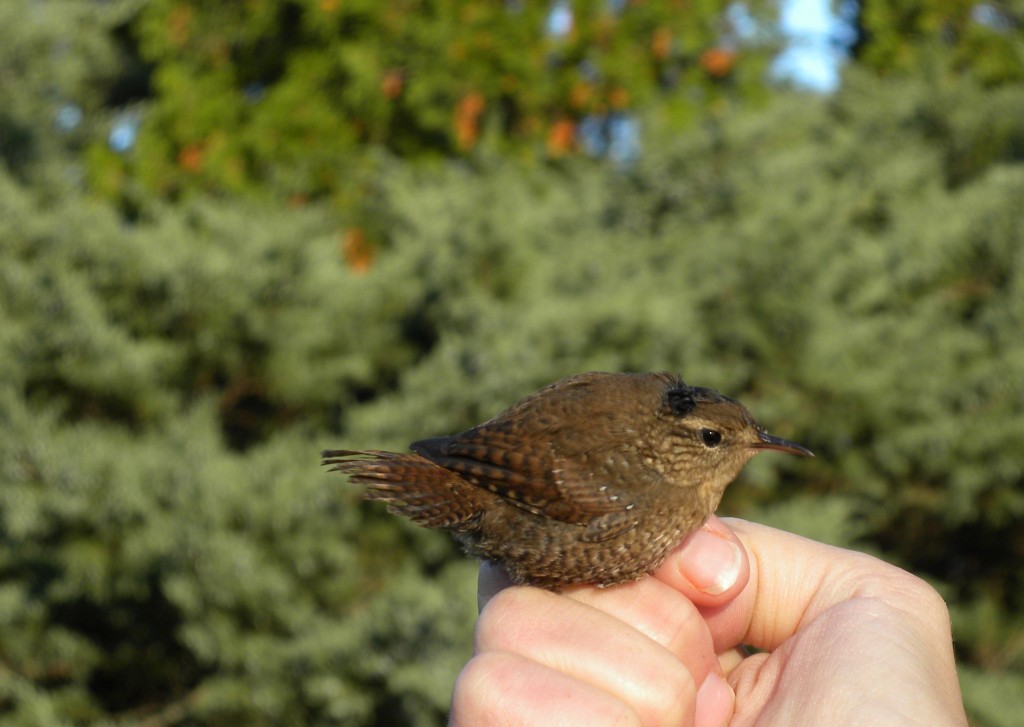October 13 2012. Normandale, ON. The first real frost of the fall touched down last night, a killing frost I think horticulturists call it, it left many garden plants limp and watery looking. Yesterday’s strong north wind sent thousands of Turkey Vultures packing and today large flocks of Red-winged Blackbirds were on the move too. There seems to be very little of summer to hang on to now; no going back.
I volunteered to help with some trail maintenance at a nature reserve today and spent a morning walking forest trails, and loving it; undemanding work richly rewarded. A few birds were evident, mostly woodpeckers it seems: we heard from a Red-bellied Woodpecker, a distant Pileated Woodpecker and watched a couple of Downy Woodpeckers at work. A small group of Yellow–rumped Warblers moved through the treetops, heading southwest I imagine. My best sighting, and bird of the day, was a Winter Wren picking and exploring the mossy fallen logs beside a clean, cold, sand-bottomed creek. We watched each other closely. Back in the summer I had heard and briefly seen a Winter Wren in this same general location and felt confident that it was a territorial male, notable because it’s quite far south of their usual breeding range. I’d like to think today’s Winter Wren, a golf-ball sized bird with a little stick up tail, was the same bird.
This one was photographed yesterday at the banding lab. It had just been banded and had its head examined, hence the ruffled feathers on its crown. A useful technique for aging birds when plumage is inconclusive, is to dampen and part the crown feathers and look for evidence of partial or incomplete fusing of the skull which is just visible through the pale skin.
